Craig Robert Martin, Massachusetts Institute of Technology
Breathing shortly in the skinny mountain air, my colleagues and I set down our gear. We’re at the base of a jagged outcrop that protrudes upwards out of a steep gravel slope.
The muffled soundscape of the spectacular Himalayan wilderness is punctuated by a army convoy roaring alongside the Khardung-La street beneath. It’s a reminder how shut we’re to the long-disputed borders between India, Pakistan and China which lie on the ridgelines only a few miles away. https://www.google.com/maps/embed?pb=!1m18!1m12!1m3!1d13088582.506864522!2d68.70515675564154!3d34.45999998049693!2m3!1f0!2f0!3f0!3m2!1i1024!2i768!4f13.1!3m3!1m2!1s0x0%3A0x0!2zMzTCsDI3JzM2LjAiTiA3N8KwNDAnMTIuMCJF!5e1!3m2!1sen!2sus!4v1604077003054!5m2!1sen!2sus
This space additionally comprises a distinct sort of boundary, a slim sinuous geological construction that stretches alongside the size of the Himalayan mountain vary. Known as a suture zone, it’s only some kilometers vast and consists of slivers of differing types of rocks all sliced collectively by fault zones. It marks the boundary the place two tectonic plates fused collectively and an historical ocean disappeared.
Our crew of geologists traveled right here to gather rocks that erupted as lava greater than 60 million years in the past. By decoding the magnetic data preserved inside them, we hoped to reconstruct the geography of historical landmasses – and revise the story of the creation of the Himalayas.
Sliding plates, rising mountains
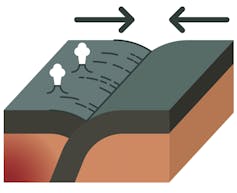
Tectonic plates make up the floor of Earth, and so they’re continually in movement – drifting at the imperceptibly slow pace of only a few centimeters every year. Oceanic plates are colder and denser than the mantle beneath them, in order that they sink downward into it at subduction zones.
The sinking edge of the ocean plate drags the ocean flooring alongside behind it like a conveyor belt, pulling the continents towards one another. When the whole ocean plate disappears into the mantle, the continents on both facet plow into one another with sufficient power to uplift nice mountain belts, like the Himalayas.
Geologists usually thought that the Himalayas fashioned 55 million years ago in a single continental collision – when the Neotethys Ocean plate subducted beneath the southern edge of Eurasia and the Indian and Eurasian tectonic plates collided.
But by measuring the magnetism of rocks from northwest India’s distant and mountainous Ladakh area, our crew has proven that the tectonic collision that fashioned the world’s largest mountain vary was truly a complex, multi-stage course of involving at the very least two subduction zones.
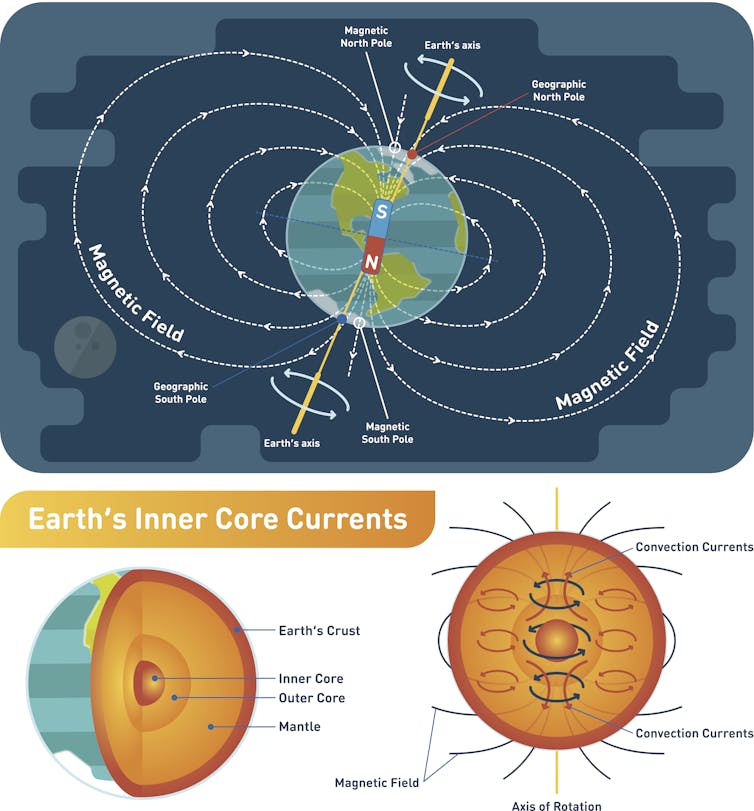
Magnetic messages, preserved forever
Constant motion of our planet’s metallic outer core creates electrical currents which in flip generate Earth’s magnetic field. It’s oriented in a different way relying the place in the world you might be. The magnetic area all the time factors towards the magnetic north or the south, which is why your compass works, and averaged over 1000’s of years it factors towards the geographic pole. But it additionally slopes downward into the floor at an angle which varies relying on how far you might be from the equator.
When lava erupts and cools to kind rock, the magnetic minerals inside lock in the course of the magnetic area of that location. So by measuring the magnetization of volcanic rocks, scientists like me can decide what latitude they got here from. Essentially, this methodology permits us to unwind hundreds of thousands of years of plate tectonic motions and create maps of the world at totally different instances all through geologic history.
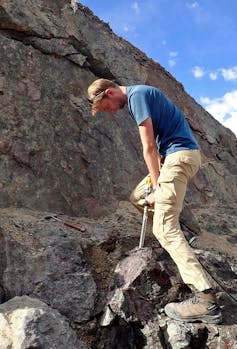
Over a number of expeditions to the Ladakh Himalayas, our crew collected lots of of 1-inch diameter rock core samples. These rocks initially fashioned on a volcano energetic between 66 and 61 million years in the past, round the time that the first phases of collision started. We used a hand-held electrical drill with a specifically designed diamond coring bit to drill roughly 10 centimeters down into the bedrock. We then fastidiously marked these cylindrical cores with their authentic orientation earlier than chiseling them out of the rock with nonmagnetic instruments.

The intention was to reconstruct the place these rocks initially fashioned, earlier than they have been sandwiched between India and Eurasia and uplifted into the excessive Himalayas. Keeping monitor of the orientation of the samples in addition to the rock layers they got here from is important to calculating which approach the historical magnetic area pointed relative to the floor of the floor because it was over 60 million years in the past.
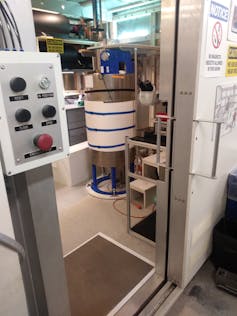
We introduced our samples again to the MIT Paleomagnetism Laboratory and, inside a particular room that’s shielded from the modern-day magnetic area, we heated them in increments as much as 1,256 levels Fahrenheit (680 levels Celsius) to slowly take away the magnetization.
Different mineral populations purchase their magnetization at totally different temperatures. Incrementally heating after which measuring the samples on this approach allows us to extract the authentic magnetic course by eradicating newer overprints which may conceal it.
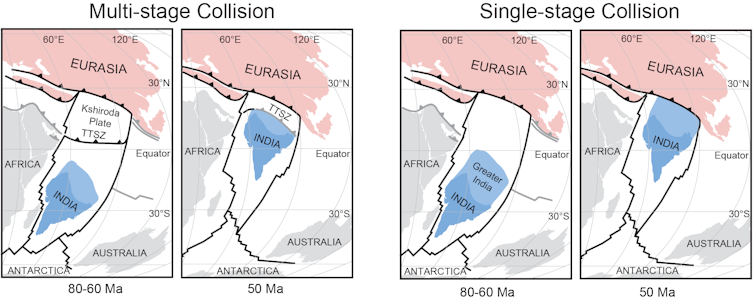
Magnetic traces construct a map
Using the common magnetic course of the complete suite of samples we will calculate their historical latitude, which we discuss with as the paleolatitude.
The authentic single-stage collision mannequin for the Himalaya predicts that these rocks would have fashioned near Eurasia at a latitude of round 20 levels north, however our knowledge exhibits that these rocks didn’t kind on both the Indian or the Eurasian continents. Instead, they fashioned on a series of volcanic islands, out in the open Neotethys Ocean at a latitude of about 8 levels north, 1000’s of kilometers south of the place Eurasia was positioned at the time.
This discovering could be defined provided that there have been two subduction zones pulling India quickly towards Eurasia, relatively than only one.
[You’re smart and curious about the world. So are The Conversation’s authors and editors. You can get our highlights each weekend.]
During a geologic time interval generally known as the Paleocene, India caught up with the volcanic island chain and collided with it, scraping up the rocks we finally sampled onto the northern edge of India. India then continued northward earlier than ramming into Eurasia around 40 to 45 million years ago – 10 to fifteen million years later than was usually thought.
This last continental collision raised the volcanic islands from sea degree up over 4,000 meters to their present-day location, the place they kind jagged outcrops alongside a spectacular Himalayan mountain cross.
Craig Robert Martin, Ph.D. Student in Earth, Atmospheric and Planetary Sciences, Massachusetts Institute of Technology
This article is republished from The Conversation beneath a Creative Commons license. Read the original article.






